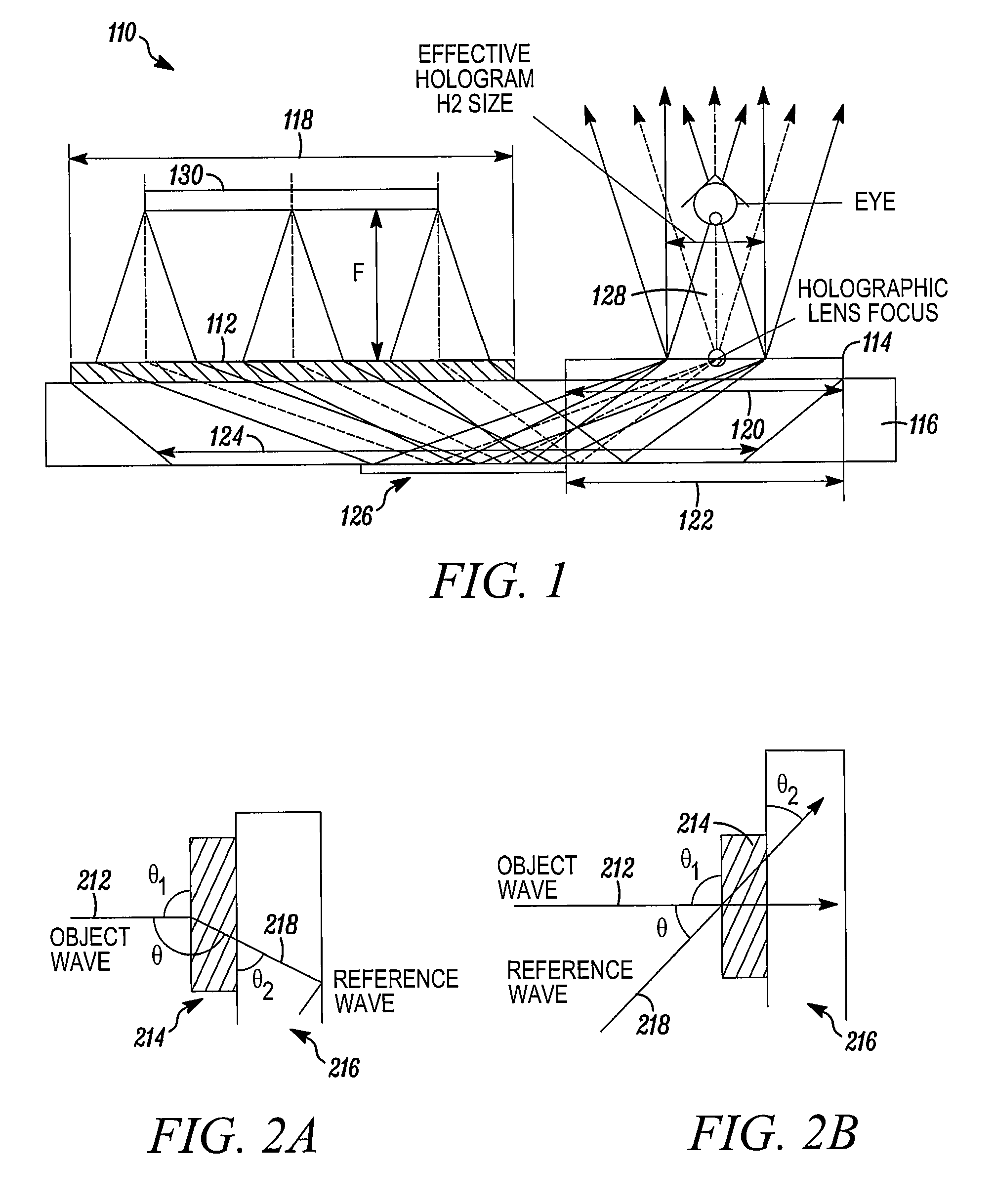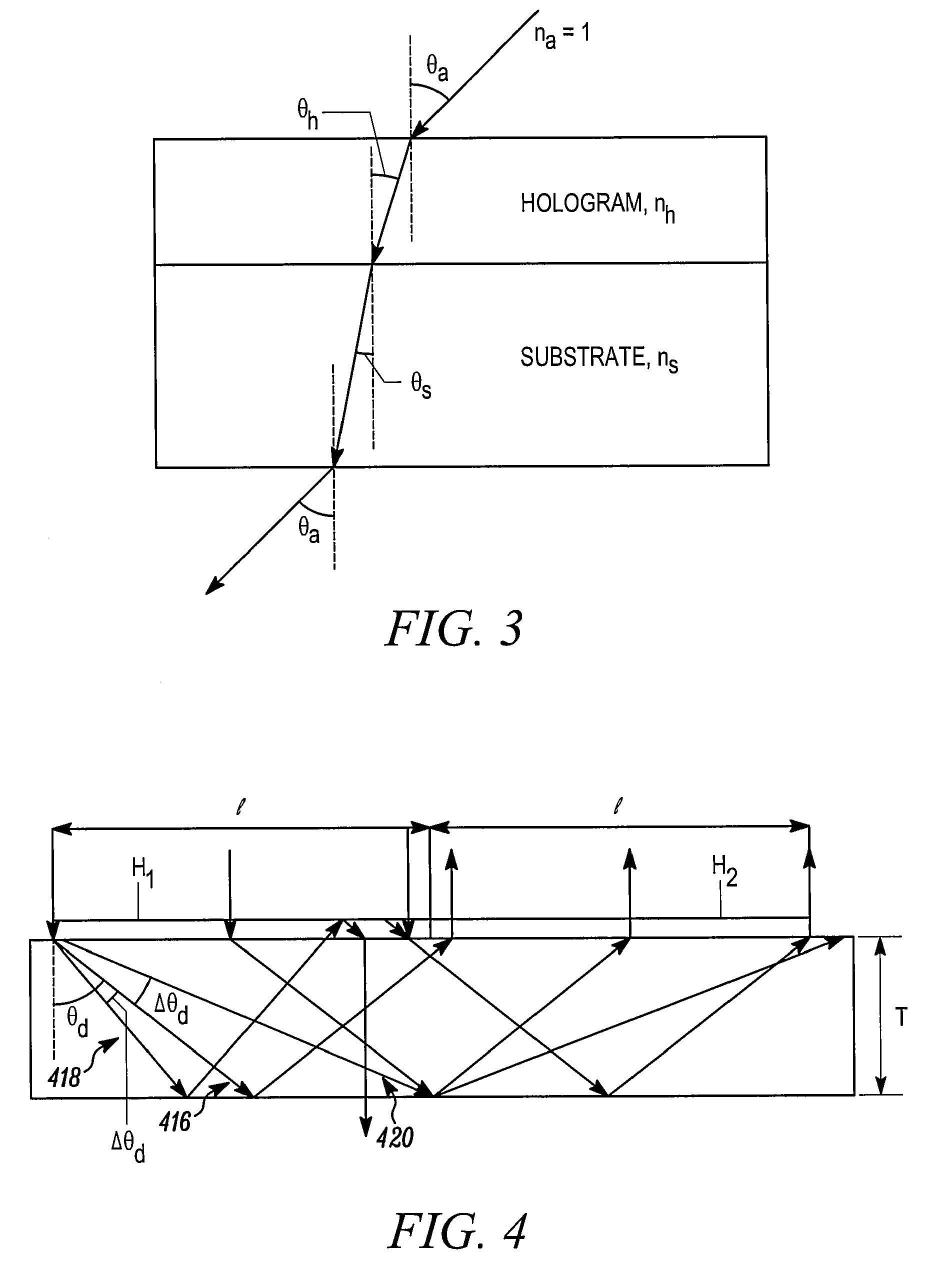Holographic Substrate-Guided Wave-Based See-Through Display
a technology of see-through display and substrate, applied in the direction of holographic processes, instruments, optical elements, etc., can solve the problems of limiting the application of users, dim view of the outside world, and users' inability to see through to the real world, so as to increase the viewing area or the quality of the total display
- Summary
- Abstract
- Description
- Claims
- Application Information
AI Technical Summary
Benefits of technology
Problems solved by technology
Method used
Image
Examples
Embodiment Construction
[0048]Although the present invention is susceptible of embodiment in various forms, there is shown in the drawings and will hereinafter be described presently preferred embodiments with the understanding that the present disclosure is to be considered an exemplification of the invention and is not intended to limit the invention to the specific embodiments illustrated.
[0049]It is to be further understood that the title of this section of the specification, namely, “Detailed Description of the Invention” relates to a rule of the United States Patent and Trademark Office, and is not intended to, does not imply, nor should be inferred to limit the subject matter disclosed herein or the scope of the invention.
[0050]What follows is a successful design for head-mounted display based on Substrate-Guided Wave (SGW) holograms, with the optical parameters comparable to head-mounted display based on common optics, with performance in terms of see-through capability, brightness, weight, and cos...
PUM
 Login to View More
Login to View More Abstract
Description
Claims
Application Information
 Login to View More
Login to View More - R&D
- Intellectual Property
- Life Sciences
- Materials
- Tech Scout
- Unparalleled Data Quality
- Higher Quality Content
- 60% Fewer Hallucinations
Browse by: Latest US Patents, China's latest patents, Technical Efficacy Thesaurus, Application Domain, Technology Topic, Popular Technical Reports.
© 2025 PatSnap. All rights reserved.Legal|Privacy policy|Modern Slavery Act Transparency Statement|Sitemap|About US| Contact US: help@patsnap.com



